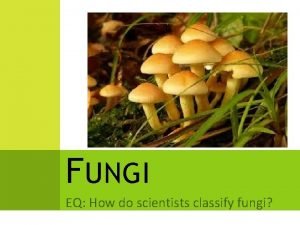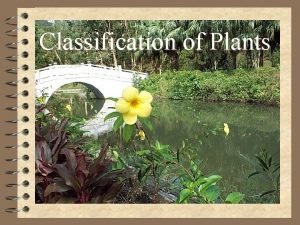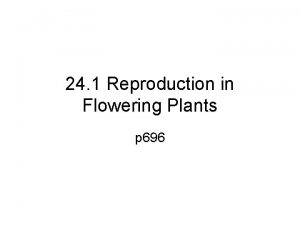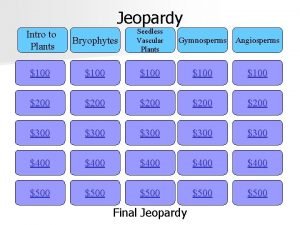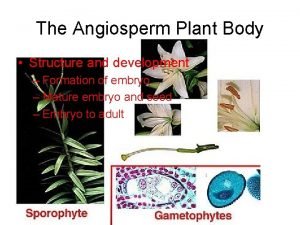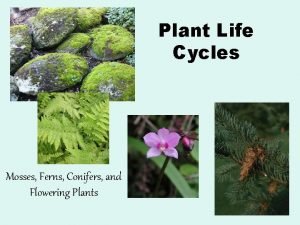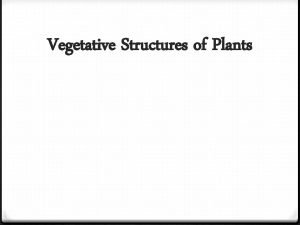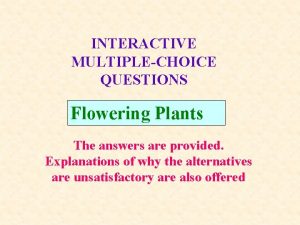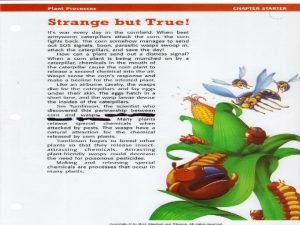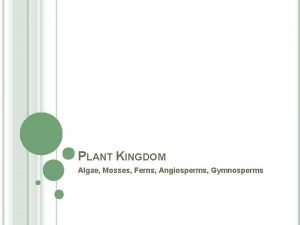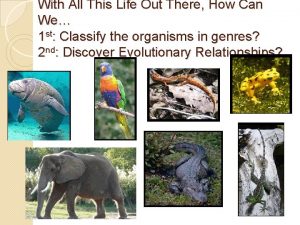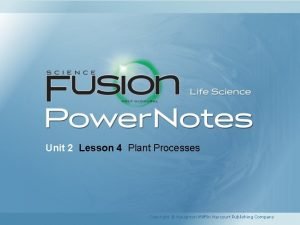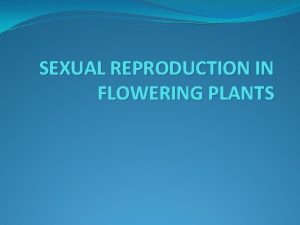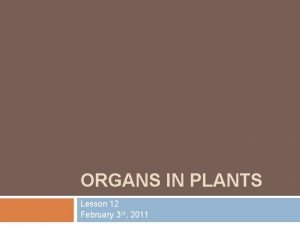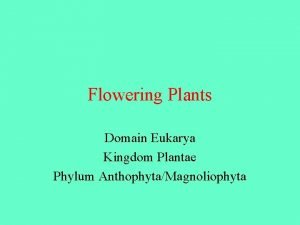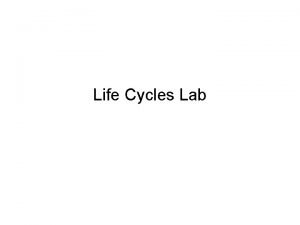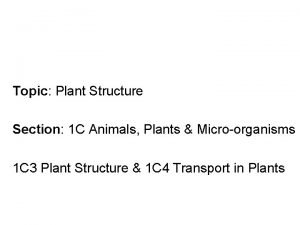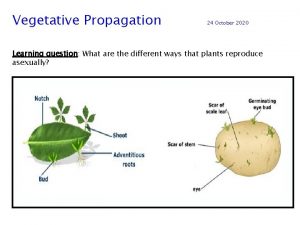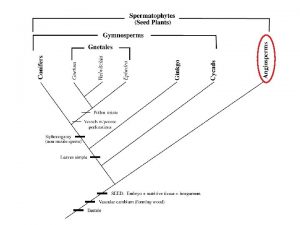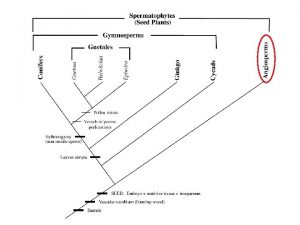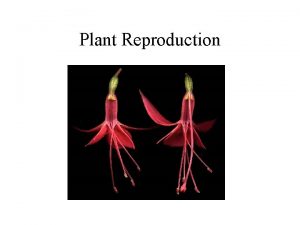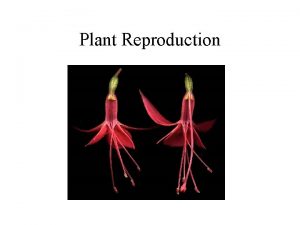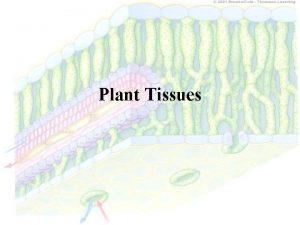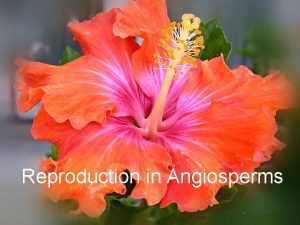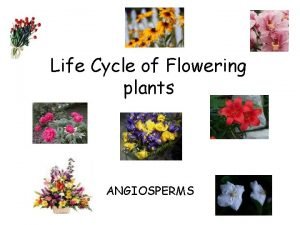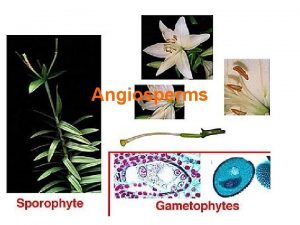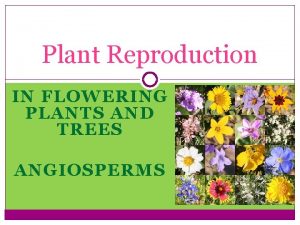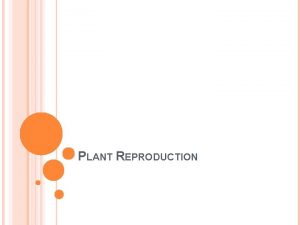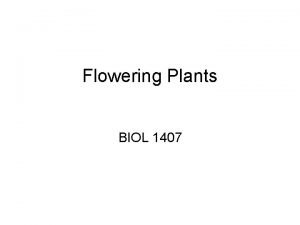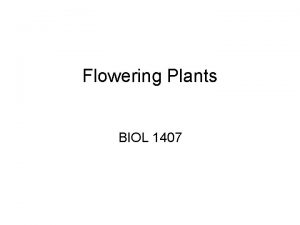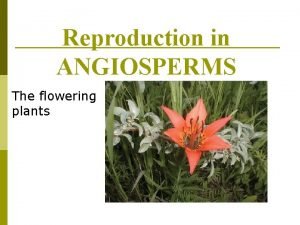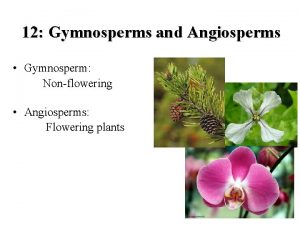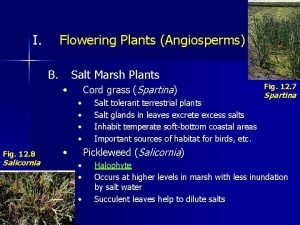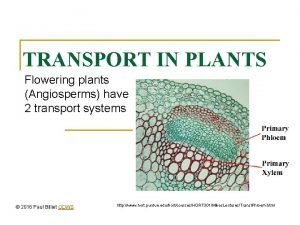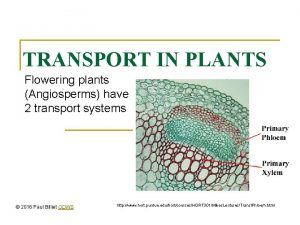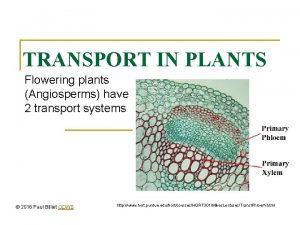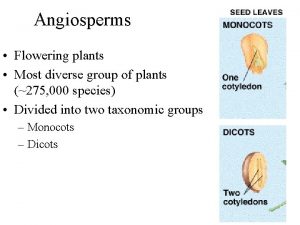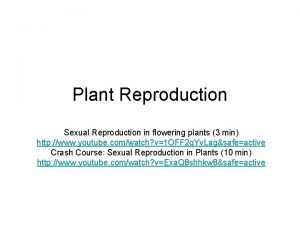Plant Reproduction In Angiosperms Flowering Plants I Introduction





























- Slides: 29

Plant Reproduction In Angiosperms (Flowering Plants)

I. Introduction A. Seed Plants • Adaptations for terrestrial seed plant reproduction: Ø flowers or cones Ø transfer of sperm by pollination Ø protection of embryos in seeds 1. Gymnosperms: 2. Angiosperms: Seed plants that bear unprotected seeds within the slots of cones Flowering plants that bear coated seeds within ovaries (fruit)

II. Structure of Flowers Stigma • Sticky to collect pollen Style Stamen Anther • Site of meiosis to produce sperm in pollen grains Filament • Supports the anther Sepals • Outermost circle of floral parts • Enclose the bud before it opens • Protects the flower while it develops Ovary Pistil • Supports the stigma • Contains one or more ovules (Produces embryo sac, which contains the egg) Petals • Located just inside the sepals • Often brightly colored to attract pollinators

Sepals Immature Flower Parts

Petal Sepal

Stamen Filament Anther


Stigma Style Ovary Pistil

Ovule Ovary

3 Sepals 3 Petals 1 Pistil 6 Stamen

III. Life Cycle of Angiosperms A. Meiosis occurs in the anthers and ovaries to produce pollen grains and embryo sacs. 1. Pollen Grain contains: a. Tube nucleus (n) b. Generative nucleus (n)



2. Embryo Sac contains: a. Egg (n) b. 2 polar nuclei (n)


B. Pollination: pollen released from anther lands on stigma 1. Self- Pollination: pollen lands on a stigma of the same plant 2. Cross- Pollination: pollen lands on a stigma of a different plant * Pollen carried by gravity, wind, insects, birds, small animals, etc.


C. Fertilization 1. Pollen grain’s tube nucleus releases enzymes to “dig” a pollen tube through the style to the ovule

2. Pollen grain’s generative nucleus divides once to produce 2 sperm, which travel down the pollen tube

3. Double Fertilization: a) One sperm fertilizes the egg to produce a diploid embryo b) The other sperm fuses with the 2 polar nuclei to produce triploid (3 n) endosperm.

4. Endosperm = food supply for embryo a) Cotyledons: “seed leaves” that absorb some of the nutrients in endosperm to nourish the seedling during germination *Monocot: plant with one cotyledon *Dicot: plant with two cotyledons


D. Seeds: form from the ovule containing the fertilized embryo sac. 1. Plant embryo surrounded by a food supply ex. bean 2. Seed Coat: surrounds and protects the embryo and keeps the seed contents from drying out


Angiosperm

E. Fruit & Seed Dispersal: 1. After fertilization, ovary walls thicken to form fruit.

2. Seeds dispersed by vectors ex. animals, wind, water * Seed coats cannot be digested. * Animals eat fruit and egest seeds elsewhere

F. Dormancy: Period when embryo is alive but not growing. G. Germination: When conditions are suitable, young plant sprouts from seed

 Classify the non flowering plants with examples
Classify the non flowering plants with examples Flowering and non flowering plants
Flowering and non flowering plants Characteristics of ferns
Characteristics of ferns Female parts of a flower diagram
Female parts of a flower diagram Are angiosperms seedless vascular plants
Are angiosperms seedless vascular plants Semilla de maiz partes
Semilla de maiz partes Moss is flowering plant
Moss is flowering plant Vegetative structures of a plant
Vegetative structures of a plant Multiple choice questions on flowering plants
Multiple choice questions on flowering plants Flower structure and function
Flower structure and function Monstera axillary bud growth
Monstera axillary bud growth Parts of a leaf
Parts of a leaf Mosses algae and ferns all have
Mosses algae and ferns all have Cladogram of 5 indoor plants
Cladogram of 5 indoor plants Unit 2 lesson 12 flowering plants
Unit 2 lesson 12 flowering plants Agamospory
Agamospory Plant organ
Plant organ Angiosperm with one seed leaf
Angiosperm with one seed leaf Kingdom plantae images
Kingdom plantae images Life cycle of a flowering plant
Life cycle of a flowering plant Typical plant
Typical plant Binary fission in bacteria
Binary fission in bacteria Asexualk
Asexualk Sexual vs asexual reproduction venn diagram
Sexual vs asexual reproduction venn diagram Introduction in plant breeding
Introduction in plant breeding Taichum
Taichum Plant introduction in plant breeding
Plant introduction in plant breeding Vegetative propagation mind map
Vegetative propagation mind map Male plant reproductive system
Male plant reproductive system Plants and animals reproduction venn diagram
Plants and animals reproduction venn diagram

